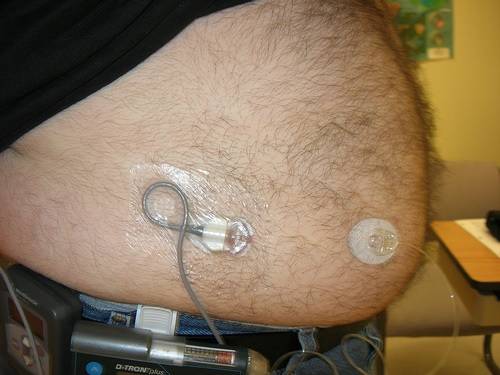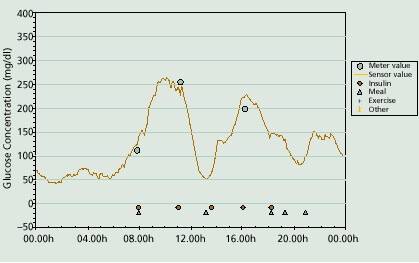Working Time
- Mon-Sat 09:00AM - 09:00PM
Sunday - Closed
Contact Info
-
Phone: 04040101539
9059600930
Continuous Glucose Monitoring System(CGMS)
What is continuous glucose monitoring?
Continuous glucose monitoring, also called CGM, is a new way for people with diabetes to monitor glucose
levels.
CGM measures glucose levels in the fluid between body cells every few minutes throughout the day and night.
Most people who use CGM have type 1 diabetes, and many also use an insulin pump.
CGM has a number of advantages over fingerstick testing.
Cgms allows a person to check glucose levels without a blood sample. Cgms checks levels every oneto five
minutes.
CGMS tells the user :
- What glucose levels are now
- What glucose levels have been over a set number of hours
- Whether glucose levels are on their way up or down
- How quickly glucose levels are rising or falling
In addition, a CGM system sounds an alarm when glucose levels are too high or too low. Users can set the alarm to fit their personal glucose targets.
Why is CGM used?
Fingersticks only show glucose levels at certain points in time.Fingerstick testing is like seeing photos of
glucose levels to get a sense of what happened that day. In contrast, CGM shows the ups and downs of glucose
levels around the clock. It’s like watching a movie of glucose levels. Information about glucose trends helps
users take steps to keep blood glucose levels in a safe range. Users can share reports from the CGM system
with their health care team to guide any adjustments to their diabetes management plan.
What can people expect from cgms ?
Studies have shown that CGM can help people with type 1 diabetes keep blood glucose levels on increased risk
for episodes of severe low blood glucose (hypoglycemia). Staying on target can mean fewer health problems,
day-to-day and in the long run.
How does CGM work?

First, a tiny glucose-sensing device called a "sensor" is inserted just under the skin of the abdomen. The insertion is quick, and is usually not painful.Tape is used to hold it in place. The sensor measures the level of glucose in the tissue every 10 seconds and sends the information via a wire to a cell phone-sized device called a "monitor" that you attach to a belt or the waistline of your pants. The system automatically records an average glucose value every five minutes for up to seven days.
After the three- to seven-day time period, the sensor is removed at the doctor's office and the information stored in the CGMS is downloaded into a computer. You and your doctor or diabetes health care team can then review your blood sugar levels in relation to the other data collected and make any necessary adjustments in your diabetes management plan. The information will be presented as graphs or charts that can help reveal patterns of glucose fluctuations.

The above figure shows Daily Glucose Profile from the Continuous Glucose Monitoring System (CGMS) showing episodes of nocturnal and post-insulin hypoglycemia.
The continuous glucose monitor is not intended for day-to-day monitoring or long-term self-care, and it is not a replacement for standard blood sugar monitoring. It is only intended for use to discover trends in blood sugar levels. This helps your health care team make the most appropriate decisions regarding your treatment plan.
The main advantage of continuous glucose monitoring is that it can help identify fluctuations and trends that would otherwise go unnoticed with standard HbA1c tests and intermittent finger stick measurements.
For example, the device can capture dangerously low overnight blood sugar levels, which often go undetected, reveal high blood sugar levels between meals, show early morning spikes in blood sugar, evaluate how diet and exercise affect blood sugars, or provide a review of the effects of changes made to your treatment by your doctor.
Your doctor can prescribe the procedure as often as he or she believes it necessary to properly evaluate your blood sugar patterns.
 NABH ACCREDITED
NABH ACCREDITED


